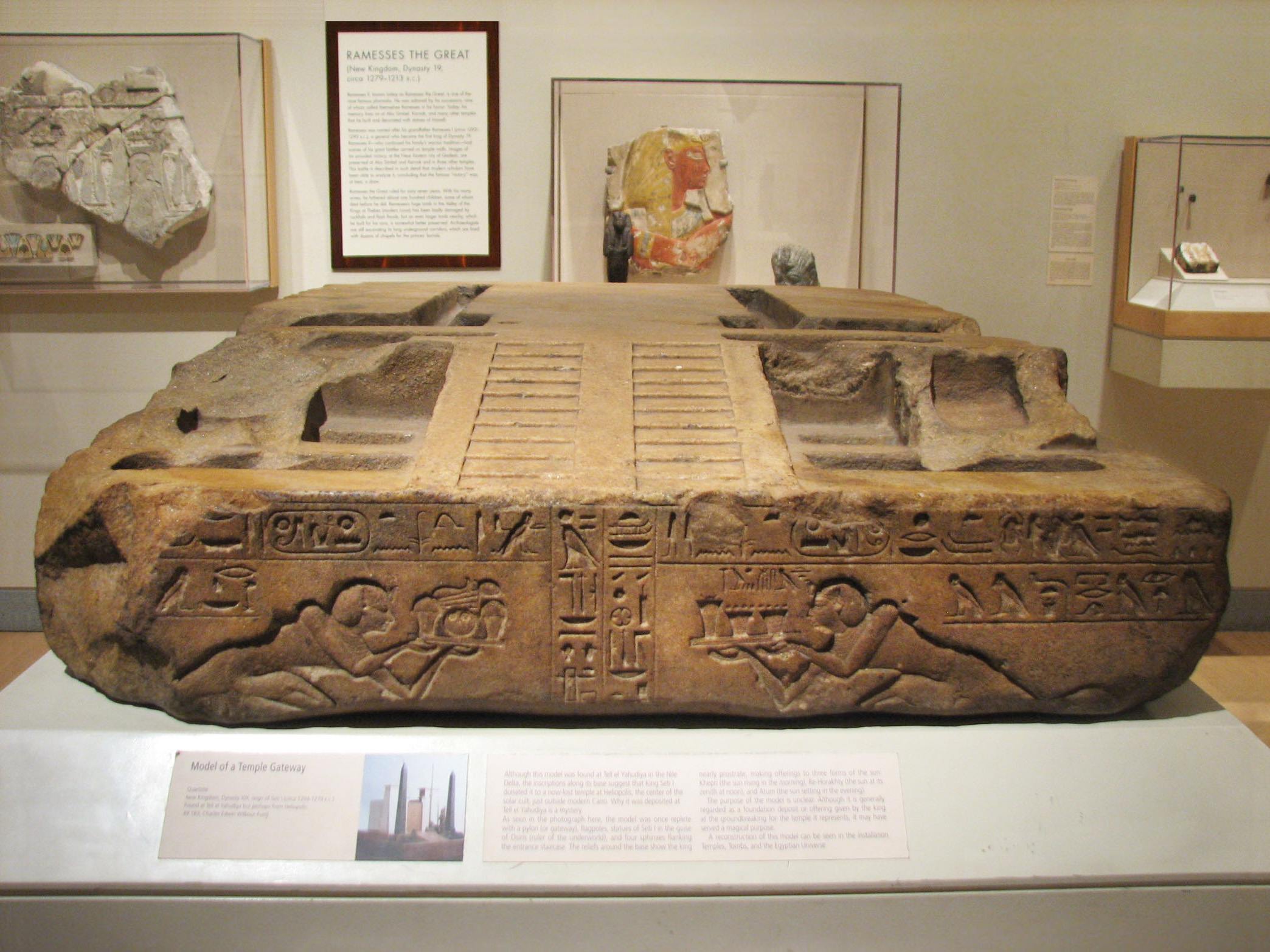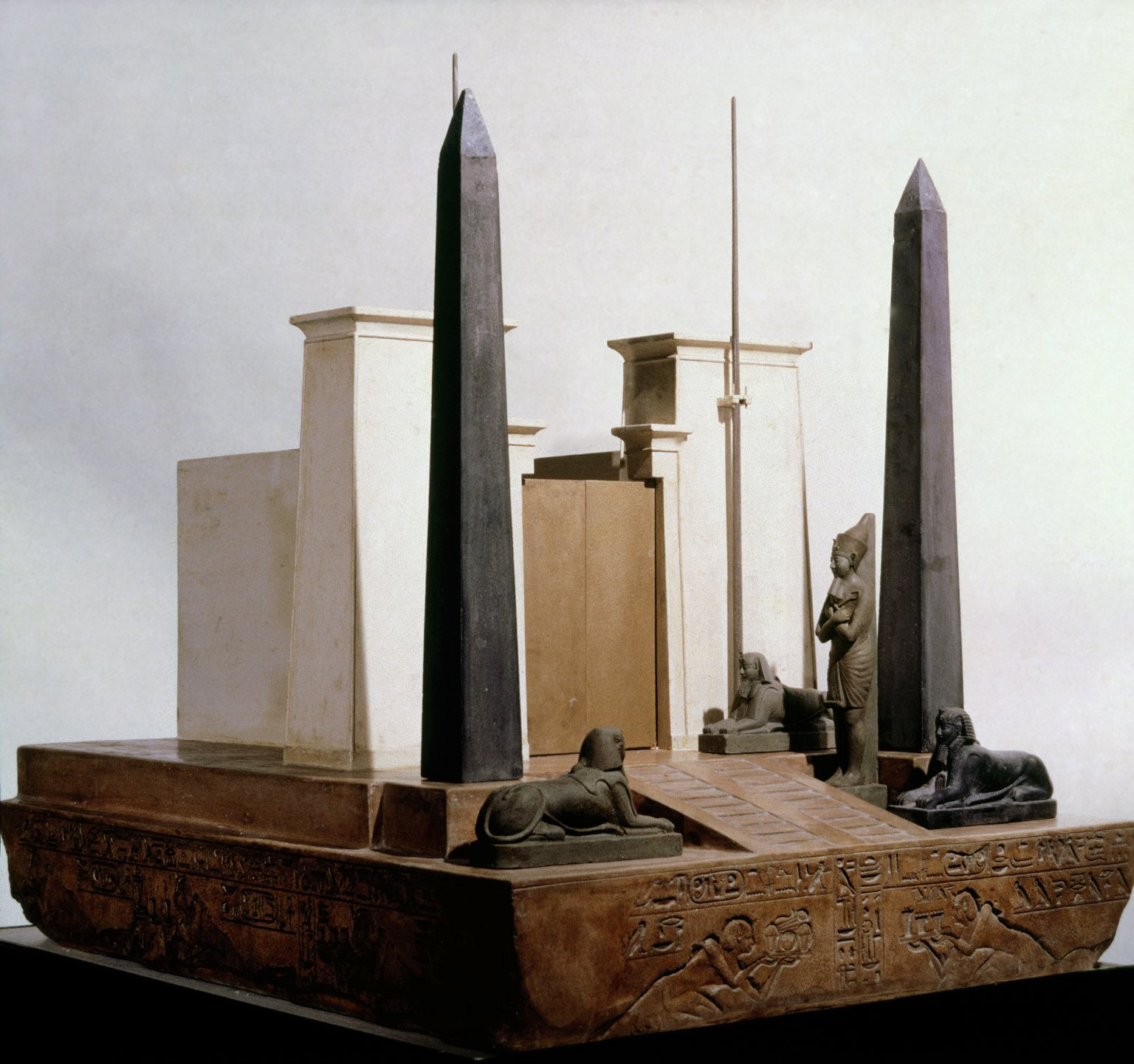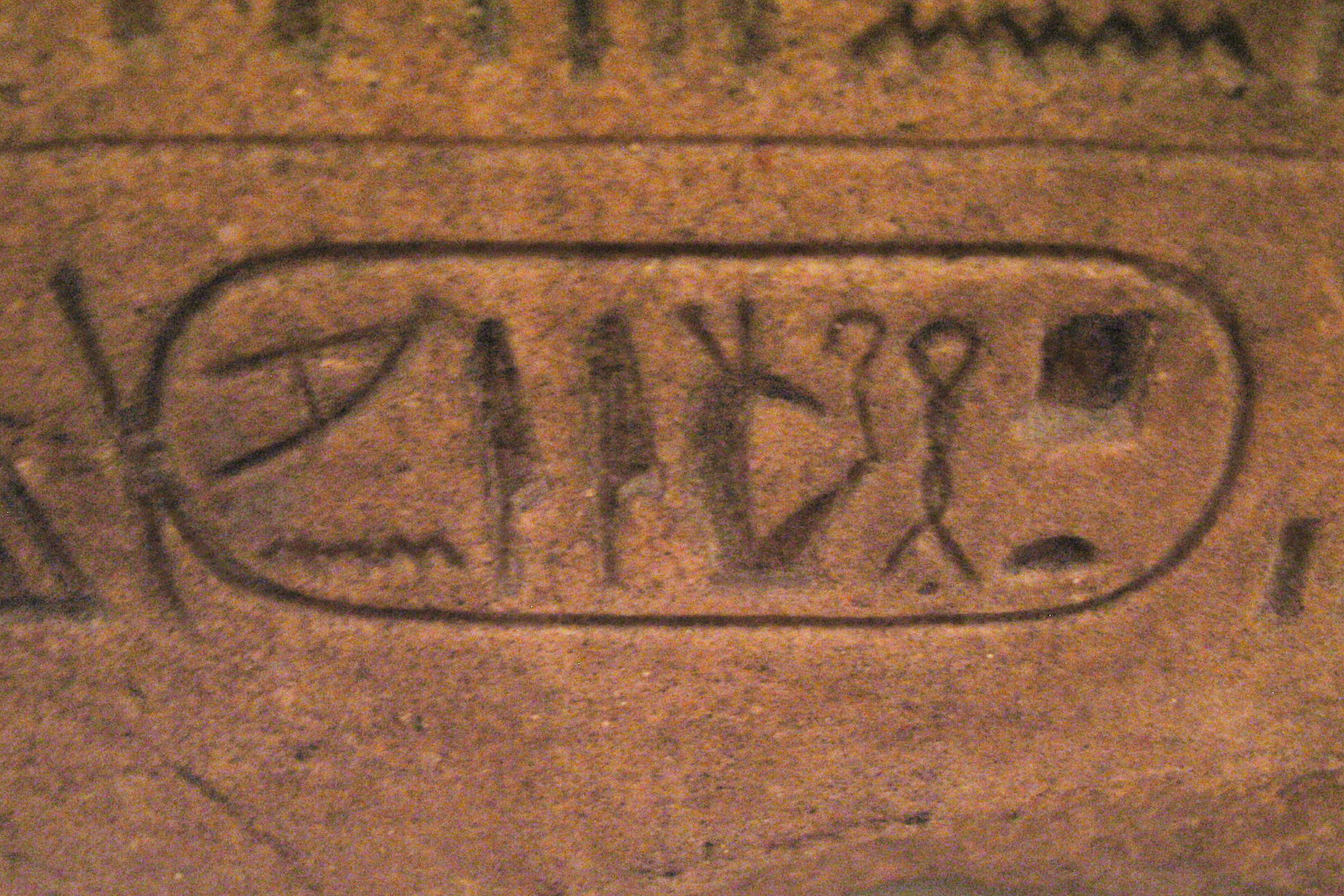|
Brand proposes a few corrections to this reconstruction and then says:
"It is unfortunate that the texts on the model's base nowhere give the official
name of the proposed structure. In fact, the bandeau texts describing it are
somewhat vague. The inscription on its right side does list the individual
elements of the models, but only so as to catalogy the materials of which its
various parts, and not the actual building, were made. The left bandeau text
describes the monument as an 'August sanctuary,' shm špss, which
seems to be a generic term meaning 'shrine/sanctuary'.
"Only one part of Seti's projected pylon gateway and forecourt can be
identified with any degree of certainty, namely the Flaminian obelisk. As of
yet, no trace of the pylon itself, or of the colossal statues or sphinxes that
might have stood in front of it, have been found."("Catalog of Monuments", page 145)
It's quite a mystery. Perhaps Seti I died before he could make this temple a reality. If that's the case, some of his plans may have been preserved in a slightly different form, as Brand explains:
"The side walls at the back of the model may represent a court similar to the Ramsesside court at Luxor Temple. In fact, the building represented by the Brooklyn model is strikingly close in design to that of the Luxor forecourt. This is perhaps more significant now that the latter appears to have been planned and partially constructed late in Seti I's reign."
|








